GRID-TIE 5.2KW SOLAR POWER SYSTEM
Original price was: $12,552.00.$8,450.00Current price is: $8,450.00.
Description
Grid-Tie 5.2kW Solar Power System Kyocera Solar Panels/Fronius Inverter
Description
This a grid-tie solar power system for a residential energy-efficient home. The output of this system varies depending upon where you live and what time of the year it is. Use the map at the bottom of the page to get an idea of how many Watt*Hours you can expect from your system on average during a typical year. Expect more ouput in the summer (highest output period) and less in the winter (lowest output period).

Components:
OUR Solar Power Systems include the major components needed for a solar installation. Since each installation is unique, some parts/materials will need to be purchased separately to satisfy the needs of your specific project and local regulations.
1. Photovoltaic Modules (aka Solar Panels, Solar Electric Panels)
The PV modules are the individual building blocks for providing power from the sun. They are typically made from silicon cells, glass, tedlar, and aluminum. PV modules can vary in type, size, shape, and color. The common nominal voltages for grid-tie modules are 20V and 24V, in order to accommodate the voltage windows of grid tie inverters. Costs for PV modules
are currently averaging around $1.00 – $2.00 USD per rated watt.
This 5.2kW grid-tie solar power system features twenty (20) Kyocera 260 Watt Multicrystalline Solar Panels. The ONLY solar panel to rank as Performance Leader in ALL test categories by PV Evolutions Labs (as reported in GTM Research’s July 2014 PV Module Reliability Scorecard), the Kyocera 260 Watt Solar Panel is designed and built for long-term yield stability ! Click Here to read article.
2. Racking/Mounting System for PV modules
The mounting system for the PV modules includes the hardware to permanently affix the array to either a roof, a pole, or the ground. These systems are typically made of aluminum and are customized to the mounting surface and the model of module used. It is important to consider distance from roof for flush-type roof mount installations. Restricting airflow under the modules results in higher module operating temperatures that reduce power output. With pole mounts wind loading must be considered and proper civil works mu st be done with the foundation for the pole as well as the possible addition of supplementary wind supports for the array frame. The cost of a mounting system can vary drastically based upon the number of modules, roof type, and type of mounting system. The average cost is between $250 and $1000 USD.
st be done with the foundation for the pole as well as the possible addition of supplementary wind supports for the array frame. The cost of a mounting system can vary drastically based upon the number of modules, roof type, and type of mounting system. The average cost is between $250 and $1000 USD.
3. Combiner Box
A combiner box is an electrical box where series strings of PV modules are then spliced in parallel. This is also the place where the PV series string fuses or circuit breakers are located. This allows the installer to bring the separate strings together and combine them into one positive and one negative conductor, change wire types and leave the area of the modules in conduit. They are usually outside and weather rated, so they can be right next to the array. Combiner boxes can cost anywhere from $100 to $200 USD.
4. DC and AC Disconnects
The DC and AC disconnects are manual switch units that are capable of cutting off power to and from the inverter. Some inverters have disconnects integrated into the unit with switches, others can have them integrated into a power panel assembly, and some inverters leave you on your own to provide suitable disconnecting means. The disconnects are used by service personnel or authorized persons (fire/police/electric workers) to disable power from a renewable energy system (in this case PV) so that there are no live electrical parts associated with the inverter, and that no current is going to the grid that could harm utility employees in the event that they are working in your area. Homeowners or authorized personnel can use the disconnects to de-energize a system for maintenance or service. Disconnects can range in cost from $100 to $500 USD.
5. Grid Tie Inverter (String Inverter)
The grid tie inverter is the device that takes the energy that the photovoltaic system produces in DC current form and turns it to AC current that is then sent (sold) to the electric grid. These inverters typically have a voltage input range from 100 to 500 volts DC and they convert it into 120 volts AC, 240 volts AC, or 208 volts AC. These inverters are especially sophisticated devices that must conform to special regulations in order to tie into the utility. When the power goes out in your area, it is important to know that the grid tie inverter will not allow power to be sold back to the grid. This is done to prevent electric utility workers from being injured or killed by working on power lines they thought were de-energized. When the power goes out, your power will go out as well. A grid tie inverter will not resume normal operations until the utility grid has established standard conditions for 5 straight minutes within strict parameters. Prices for inverters can range from $0.40 to $0.60 USD per rated watt.
| Grid-Tie 5.2kW Solar Power System Includes: | ||
| Part Number | Item Description | Quantity |
| KYO260KD260GXLF | Kyocera KD260GX-LFB2 260 Watt Solar Panel |
20 |
| PVCSMK-100FT | 100′ SMK Connector Cable #10 AWG |
1 |
| PVCSMK-50FT | 50′ SMK Connector Cable #10 AWG |
1 |
| GENSMKKEY | Disconnect Key for SMK Connector Cable | 1 |
| ALRCABLECLIP-PV | Cable Clips, Stainless Steel, PV | 20 |
| TWOXR100132A | IronRidge XR100 Rail, 11 Feet, Mill Finish |
12 |
| TWOXR100CAP | IronRidge End Cap for XR-100 Rails | 8 |
| TWOXR100SPLC | IronRidge Splice Kit for XR-100 Rails | 8 |
| TWORSLFT001 | Ironridge L-Foot Kit for XR Rails (4 Pack) |
9 |
| TWORSGDMCL250B | IronRidge Grounding T-Bolt Mid Clamp Kit, Black (4 Pack) | 9 |
| TWO297000214B | IronRidge XRS End Clamp Kit F, Black (4 Pack) | 2 |
| TWORSGDST001 | IronRidge Grounding Strap, 2pcs | 2 |
| TWORSGDLG002 | IronRidge T-Bolt Grounding Lug w/Hardware, 2pk | 1 |
| MIDMNSOB3R4P | Midnite Solar MNSOB3R-4P Disconnect Switch for TL Inverters | 1 |
| GENSR-2HOLES-LN | 1/2″ Strain Relief 2 Round Holes/Locknut | 3 |
| FRNPRIMO5.0-1 | Fronius Primo 5.0 5kW Transformerless Inverter | 1 |
| MIDMNSPD-300 | Midnite Solar Surge Protection Device – 300V | 1 |
| MIDMNSPD-600 | Midnite Solar Surge Protection Device – 600V | 2 |
| HLR14WESHLBL | NEC 2014 Compliant Label- Warning: Electrical Shock Hazard | 4 |
| HLR14TURNOFFPV | NEC 2014 Compliant Labe-l Warning: Turn Off PV Before Working | 3 |
| HLR14ELECSHKDC | NEC 2014 Compliant Label- Warning: Electrical Shock Hazard, DC Voltage | 1 |
| HLR14DUALPOWER | NEC 2014 Compliant Label- Warning: Dual Power Source | 1 |
| HLRPVACDIS | NEC 2011 Compliant Label- PV System AC Disconnect Rating Label | 3 |
| HLRMPVSD | NEC 2011 Compliant Label- Main PV System Disconnect Label | 1 |
| HLRDONOTMOVE | NEC 2014 Compliant Label- Inverter Output Connection Do Not Relocate | 1 |
| HLRDCDISCT | NEC 2011 Compliant Label- Photovoltaic DC Disconnect Label | 1 |
| HLRDC2011 | NEC 2011 Compliant Label- DC Module RAting Label | 1 |
| HLRCSCIRLBL | NEC 2011 Compliant Label- Caution: Solar Circuit | 1 |
| HLRRAPID | NEC 2014 Compliant Label- Rapid Shutdown | 1 |
| HLR14DCCONDUCT | NEC 2014 Compliant Label- Warning: DC Conductors May Be Energized | 3 |
**SEE DOCUMENTS TAB ABOVE FOR A WIRING SCHEMATIC OF THIS SYSTEM (For Reference ONLY – please use Product Installation Manuals by manufacturer)
*
Note: It is important to know that the sun hours for your area change based on time of year. Average daily sun hours provide an estimate to calculate the approximate size of a system. If you are completely off the grid (not connected to utility power), and rely on PV to produce all of your electricity, you will want to have more accurate calculations. To be more accurate, use data close to your area that is broken down by month, compares the angle of PV modules, and includes information on whether or not you have an active tracker for your array.
Find the average annual insolation for your area below.
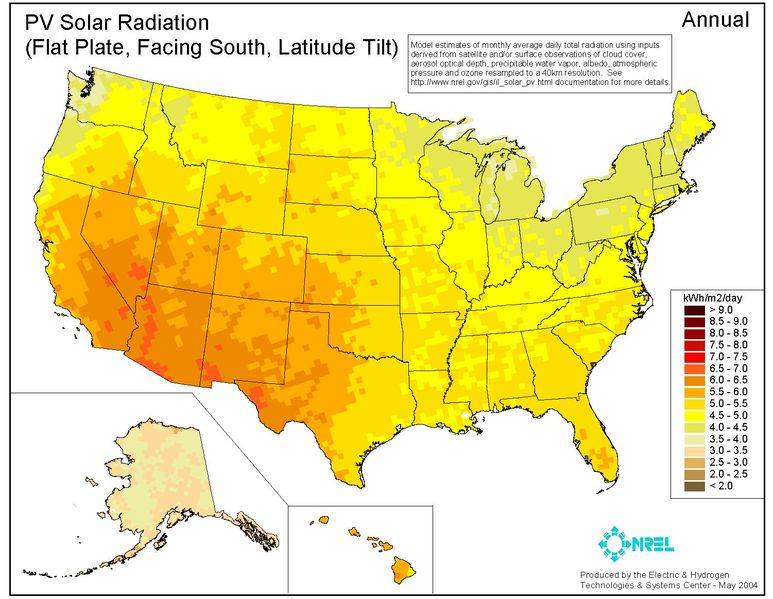
Shipping



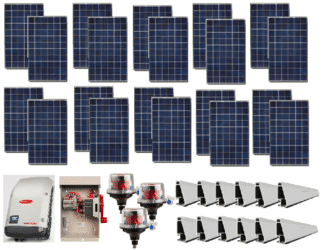
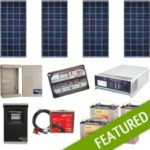
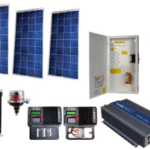

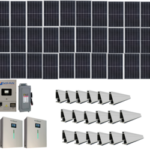
Reviews
There are no reviews yet.